Hello 40k fans! Chris Morgan, Chief Librarian of the Forge the Narrative Podcast, is here again with the next weekly segment of Tomes of the Librarius. Also, check the Tactics Corner for more great articles!
Just as a reminder, in this series we will explore facets of the history and legends of the Grimdark. This is meant to be an easy summary and introduction geared towards new players or people unfamiliar with the setting, but should still be an interesting read or fun refresher for those already familiar. There’s so much detail in this lore that a bare summary seems so inadequate, but for new people this should be the right portion to get a feel for the history of the universe we enjoy our games in.
With that out of the way, lets continue with our first series – Astartes 101. Part 3 will focus on the process of making a man an Astartes.
From Humble Beginnings
Though created by gene-science and the emperor’s brilliance, the Space Marines are not grown from nothing. It takes a human to become a Space Marine, and while every chapter has different methods for selecting their human stock, there are some universal similarities. First, all Space Marines are taken from aspirants composed entirely of adolescent males. The bodies of the young are more capable of incorporating and adapting to the extensive physiological changes that the transformation puts them through. Only rarely has an adult been able to survive the ordeal, and that was in the early days before the Horus Heresy. Most youths are put through a grueling set of trials, and many die in contest with each other. Traditions for these tests vary and are as diverse as the Astartes chapters throughout the stars. For most, they are tested not only on strength of arms, but in intelligence, courage, loyalty, and teamwork. Once these trails are passed, the transformation begins.
Methodology
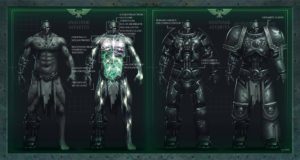
Methods vary, but most follow the same processes that their parent legion used. For example, the Blood Angels aspirants partake of the preserved blood of Sanguinius and lay in golden sarcophagi for a year, during which time they grow their secondary organs. The Ultramarines do things in steps, where organs and implants are grown and harvested, then surgically implanted in stages. Not all the aspirants survive, and some chapters’ aspirants tend to survive more than others depending both on the quality of the stock and the stability of the gene-seed.
Organs and Abilities
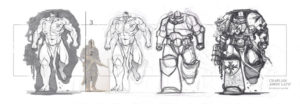
During this process, the aspirants grow in height, averaging between seven and eight feet tall, but can be more or less. Several completely new organs facilitate enhancing biological processes. Their bones become reinforced with adamantium and ceramite thanks to the Ossmodula organ. They grow a second heart, and a third lung, and gain the ability to breathe in water. The Larraman’s Organ reacts to injuries by stimulating regeneration, and can stop the bleeding of fist-sized wounds almost instantly. The catalypsean node eliminates allows them to fight constantly for weeks and months without sleep, allowing them to go into a proto-rest that still keeps them active and alert. The Sus-an membrane let’s them go into a healing coma, and many marines have survived years in the open void before being recovered (provided their armor isn’t damaged). The Omophagea allows an Astartes the ability to absorb the memories of any creature they eat by reading the memories written into their DNA, particularly the brain, but not exclusively. These are just some of the many organs that set them aside from the normal human. They all have enhanced endurance, strength, reaction time, and gain eidetic memories. Their ribcage becomes fused to better withstand impact and trauma and better protect the hearts and lungs. Their reaction times and movements far exceed those of normal humans.
Their lives as humans are over. They lose the capacity (and desire) to procreate. Their bodies become incubators for the gene-seed used in their creation. The chapter apothecaries take great care to harvest (where possible) the gene-seed of fallen battle-brothers in order to preserve the future of the chapter. Once the organic implants are incorporated, they begin their novitiate training in the 10th company of the chapter. Their lifespans vary, and while the attrition of war takes them early, it is generally around 500 years old that they begin to slow down. Some, such as the Blood Angels and their successors, have much longer lifespans. Their Chapter Master, Luis Dante, has been Chapter Master for 1,100 years (in the modern lore) and was a marine for 300-400 years prior to that. He’s the oldest Space Marine who has not been interred in a dreadnought perhaps in all of history.
The 10th company teaches the new aspirants – who are essentially teenagers in the bodies of superhuman giants – how to make war against the Imperium’s many foes. Histories, mental fortitude, weapons, strategy, martial arts, and much more goes into their training. The scouts wear carapace armor best suited to their role on the battlefield, which is primarily reconnaissance and espionage.
The Final Step
Once all of the organs are complete and their novice combat training is completed in the scout companies, the only thing left is the black carapace. The black carapace is mechanical implant that fits under the skin and links to the advanced nervous system now in place. This implant allows their bodies to connect to their power armor, and in so doing makes the armor more like a second layer of skin than a piece of equipment. The servos and power bundles in the armor react immediately to the brain’s signals, and enhance the already considerable strength and endurance even further. Functions in their armor can be turned on and off with a thought. Now, with bolter in hand, they are ready to face the enemies of mankind as the Emperor created them to do long ago. They become full Adeptus Astartes.
Further Study
The book that I’ve read that best describes the initiation process is the book Dante by Guy Haley. It recounts the ascension of Dante from the time of his youth all the way to his captaincy. While the Blood Angels may not have the most typical style of raising aspirants from start to finish, it’s a great read and does a wonderful job of setting the example of how a youth goes from rascal to marine. The Black Books from the Horus Heresy series also have some very cool lore tidbits specific to their legions, including how gene-seed degradation almost killed some Legions early on, such as the Emperor’s Children. Speaking of…
If you’re more heretically inclined, you could always check out Primogenitor by Josh Reynolds. Anything with Fabulous Bill in it is likely to have tons of genetics-themed shenanigans involved.
Thanks for Reading!
That’s the conclusion of our Astartes 101, and a long introduction it was! Space Marines are (like it or not) central to the lore of 40k, and understanding them and their history helps set the stage for the universe we are all playing our games in. Now we’ll dive into some other species and lore aspects going forward. What are you excited about hearing about the most? Let me know in the comments below!
As always, check out the Frontline store if you’re looking to add some cool models to your collection!
Cheers!
Captain Morgan
And remember, Frontline Gaming sells gaming products at a discount, every day in their webcart!


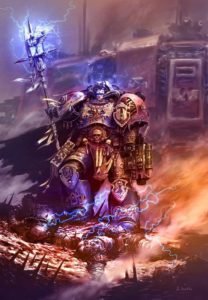
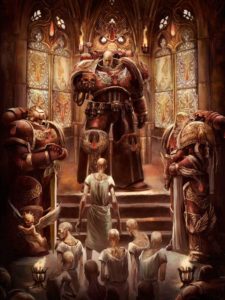
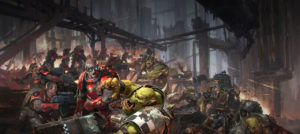
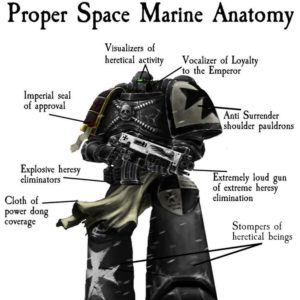
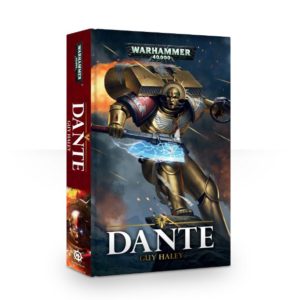
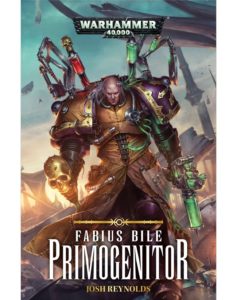
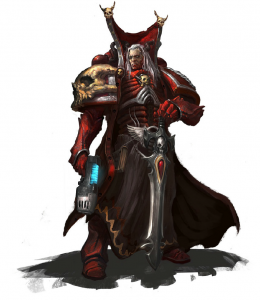


Love this articles, Chris. Full of awesome backstory for the new player.
Thanks, Reece! This is definitely one of the nice things about having a bunch of random knowledge about 30k/40k stuffed into my brain.
Love these articles! Even though I have been into 40k for almost 20 years, I always learn some cool new little tidbit of the lore that I have never known before. For example, I didn’t know Blood Angel recruits have to sit in a coffin for a year lol!!
Yeah it’s pretty cool and crazy. Many of them have visions and memories the past while they are asleep in the sarcophagi. The names of each battle brother who uses the machine are etched inside, and as part of their training aspirants have to memorize the names of those who came before and survived.